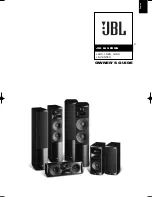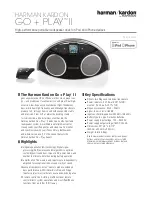
38
Even if you’re not familiar with the terminology, you may have noticed room modes before, when the bass is
very loud in one part of the room, and almost non-existent in another part of the room.
This because the waves reflect from the walls and produce standing waves or resonances, or commonly,
modes.
The resonant behaviour produces regions in the room with high sound pressure (antinodes) and regions of
very low, almost no sound pressure (nodes). There is also a time domain consequence. Because energy is
stored in a resonance, the resonance will continue for a relatively long time after the source (loudspeaker) has
stopped. This results in muddy, boomy and poorly defined bass as the room “rings” on in time.
Because most rooms have similar physical dimensions to bass waves, resonances or “room modes” dominate
the acoustic behaviour in rooms up to midrange frequencies. Room modes make a good bass response
extremely difficult in small rooms, but there a number of techniques to optimise the bass response in a room.
Different frequencies will have different mode shapes, depending on the dimensions of the room.
+
+
+
+
0
25
50
75
100
0
25
50
75
100
0
25
50
75
100
0
25
50
75
100
-
-
-
-
Loud Bass
No
Bass
Loud Bass
Wall
Wall
11.2 Room modes
First-order mode
Second-order mode
Third-order mode
Fourth-order mode
+
+
+
+
0
25
50
75
100
0
25
50
75
100
0
25
50
75
100
0
25
50
75
100
-
-
-
-
Loud Bass
No
Bass
Loud Bass
Wall
Wall
+
+
+
+
0
25
50
75
100
0
25
50
75
100
0
25
50
75
100
0
25
50
75
100
-
-
-
-
Loud Bass
No
Bass
Loud Bass
Wall
Wall
+
+
+
+
0
25
50
75
100
0
25
50
75
100
0
25
50
75
100
0
25
50
75
100
-
-
-
-
Loud Bass
No
Bass
Loud Bass
Wall
Wall
Summary of Contents for SB10A
Page 2: ...SB8A SB10A Us e r Gu i de...




































